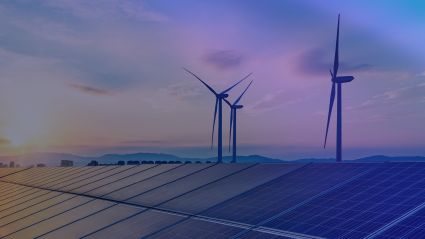
They say building a sustainable economy is a technological problem. It isn’t. The world is sufficiently supplied with greenhouse gas-reducing technologies such as renewable fuels, carbon capture, and energy storage. What it lacks is capital. According to the International Energy Agency, investments in clean energy alone will have to rise to an annual $4 trillion by the end of this decade to keep global warming in check. That amount of funding can only realistically come from financial markets—bond investors in particular.
Encouragingly, it seems the fixed income market is up to the task. Securities that embed environmental, social, and governance (ESG) considerations are in the ascendancy. Albeit from a low base, the ESG bond market has been growing rapidly for several years while the variety of instruments it contains and the range of green and socially oriented activities it finances have expanded at a dizzying pace.
Green fixed income securities with specific use-of-proceeds requirements, sustainability-linked bonds whose coupons are tied to the environmental performance of corporations, and social bonds that fund educational programs are just some examples of the innovative structures vying to become mainstream investments in the next few years.
Investors have responded enthusiastically so far. In 2021, some $1.5 trillion of new sustainable bonds were successfully placed, taking the size of the ESG labeled debt market to well above $3.5 trillion. Our analysis suggests issuance could reach an annual pace of $4.5 trillion per year by 2025.
Securities that embed environmental, social, and governance considerations are in the ascendancy.
While much of that money will be raised in the developed world, it is vital that a fair amount also comes in the form of emerging market ESG bonds. For developing economies, private capital is crucial if they are to fulfill the United Nations’ Sustainable Development Goals (SDGs) by 2030. The SDG “financing gap”—the difference between what emerging nations need and what they currently receive in investment —is estimated to be about $2 trillion per year. Here is where green and social bonds could make a real difference. A fully-fledged sustainable debt market would provide developing world sovereigns and corporations with the means to transform their economies. According to our calculations, annual sales of emerging market ESG labeled bonds could rise to as much as $350 billion by as early as 2025.
Yet for sustainable debt to become mainstream, several obstacles need to be negotiated. To begin with, the market requires universal rules and standards. Currently, the labeling and certification of sustainable bonds differ considerably from one country to another while efforts to harmonize disclosure requirements haven’t met with much success.
One bid to establish a global framework comes from the International Capital Market Association. Earlier this year, it published a set of principles for bond issuers. But not only do these remain voluntary, they also jar with proposals set out by the European Union and China.
Making matters worse, the gatekeepers that assign ESG scores to both bonds and their issuers use different methodologies. Which means their pronouncements often sow confusion. A company judged as sustainable by one rating agency can be rated unsustainable by another.
Investors, meanwhile, need convincing that ESG bonds measure up as viable alternatives to standard government and corporate debt. Here, the bar is high. Due to their complexity, ESG securities are costly to analyze, requiring far greater scrutiny than their conventional counterparts. Nor do they fit neatly into the portfolio construction frameworks investors favor.
An analysis of the ESG securities with the longest track record—green bonds—reveals other potential trade-offs. Green bonds have delivered similar returns to non-green debt yet they trade at a premium: Their yields tend to be persistently lower than those of nominal securities. This is despite the fact that green government bonds are more volatile than their conventional counterparts. Another snag is liquidity. ESG labeled debt trades less often than conventional fixed income. This suggests the secondary market for such debt is not mature enough to absorb large buy or sell orders without significant shifts in bond prices.
Ultimately, however, none of this is insurmountable. If world leaders are genuinely committed to net zero, they will also recognize that realizing such ambitions requires capital to flow freely.
Which is why, in the battle against climate change, bond investors could find themselves in the front line.














